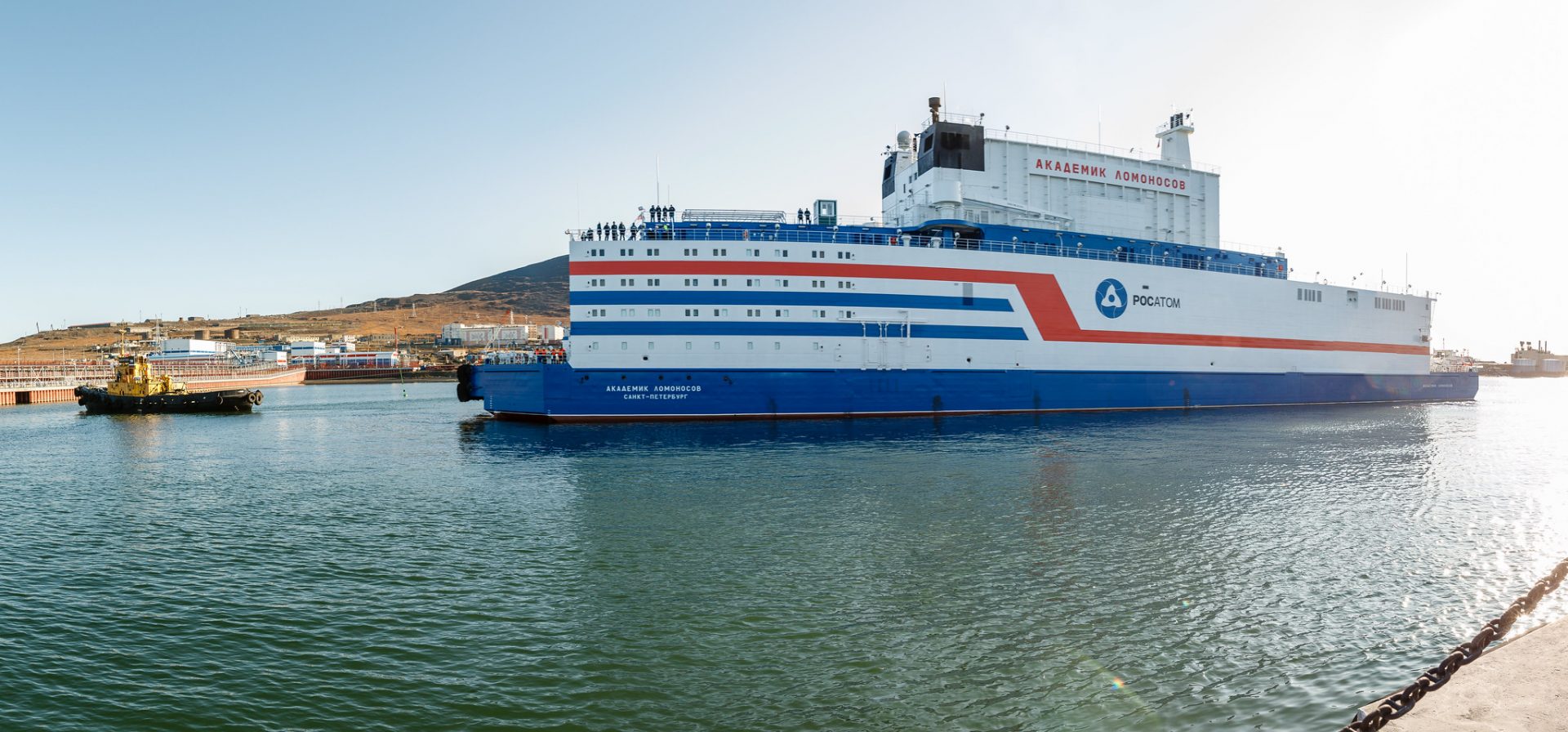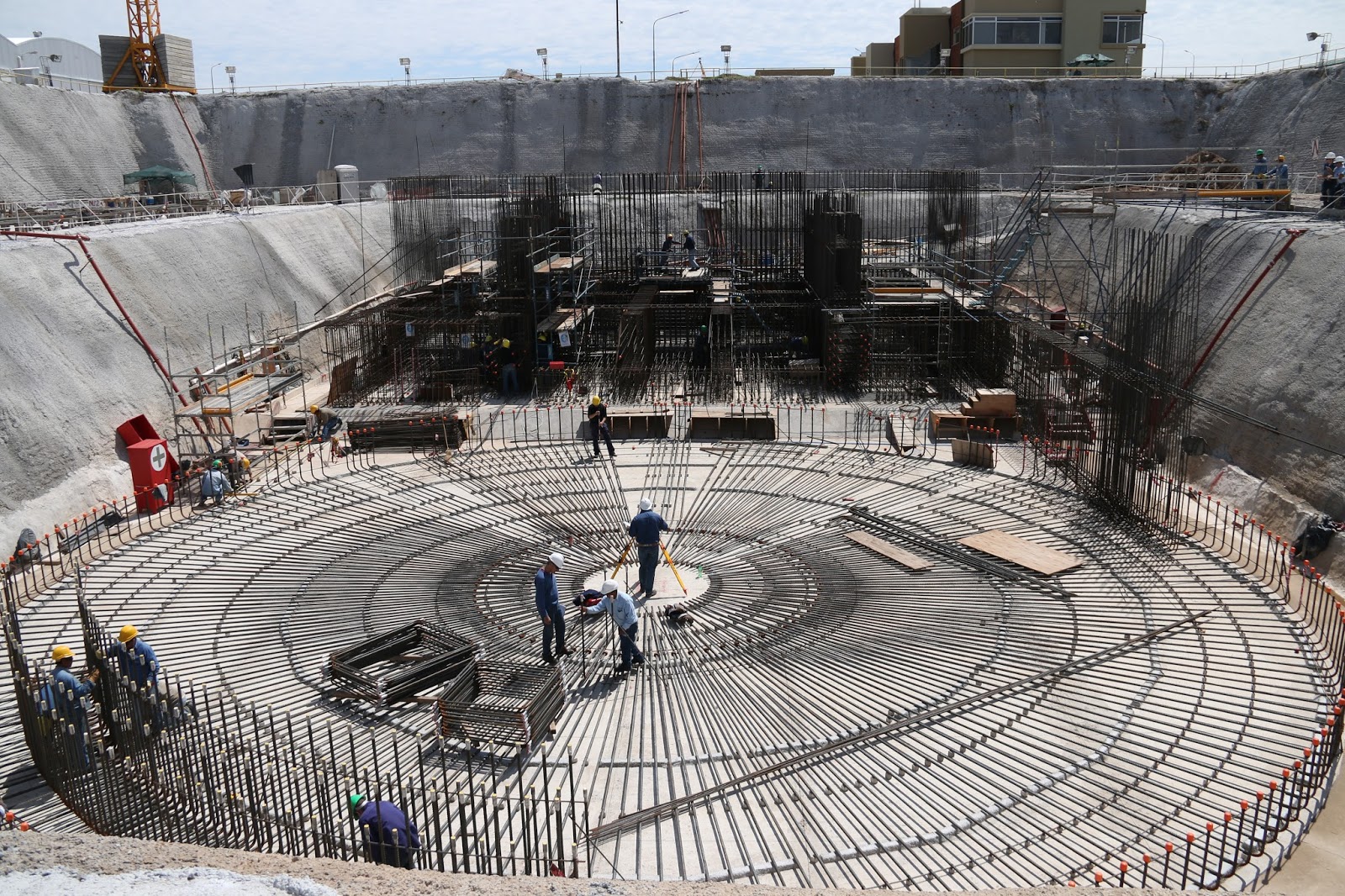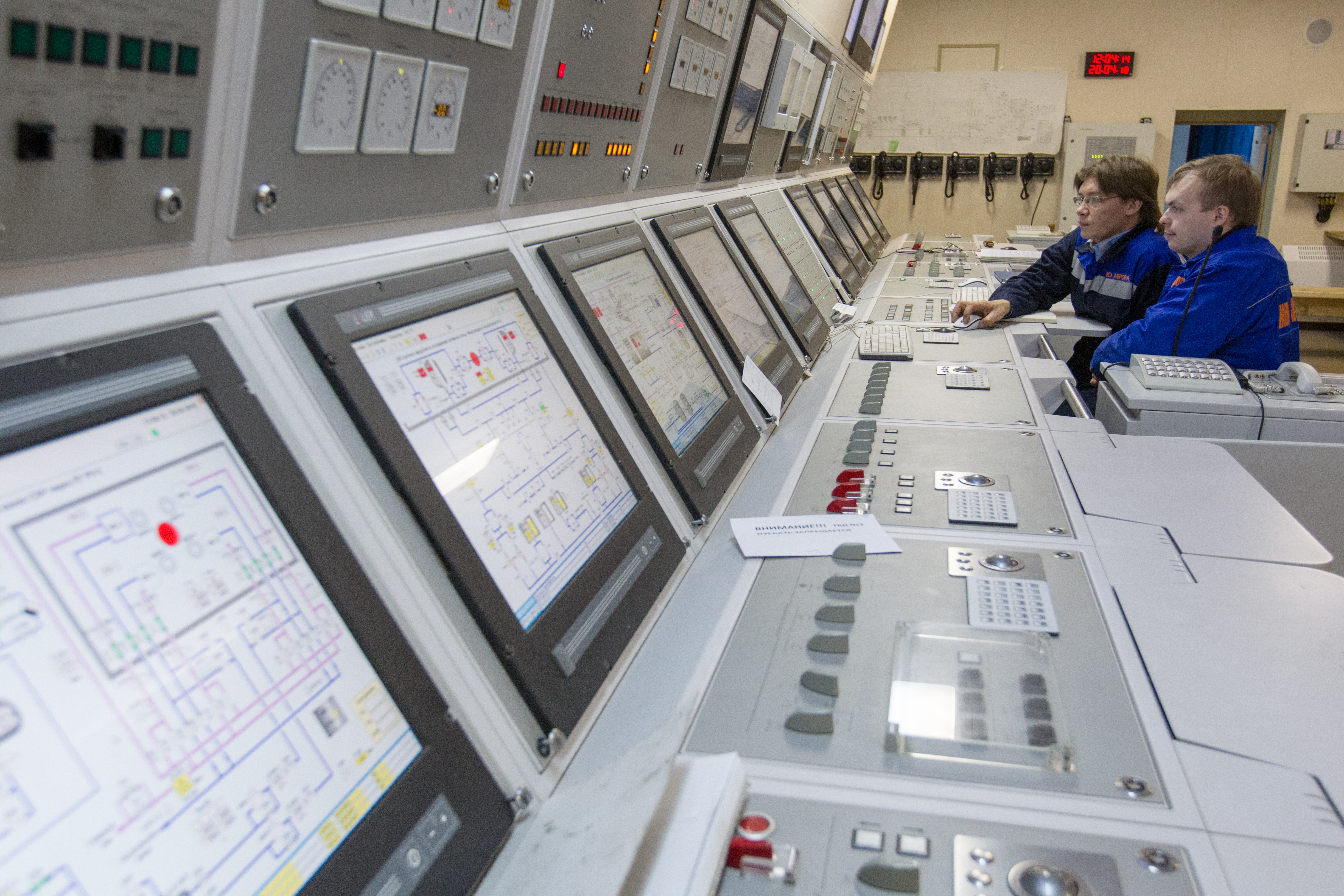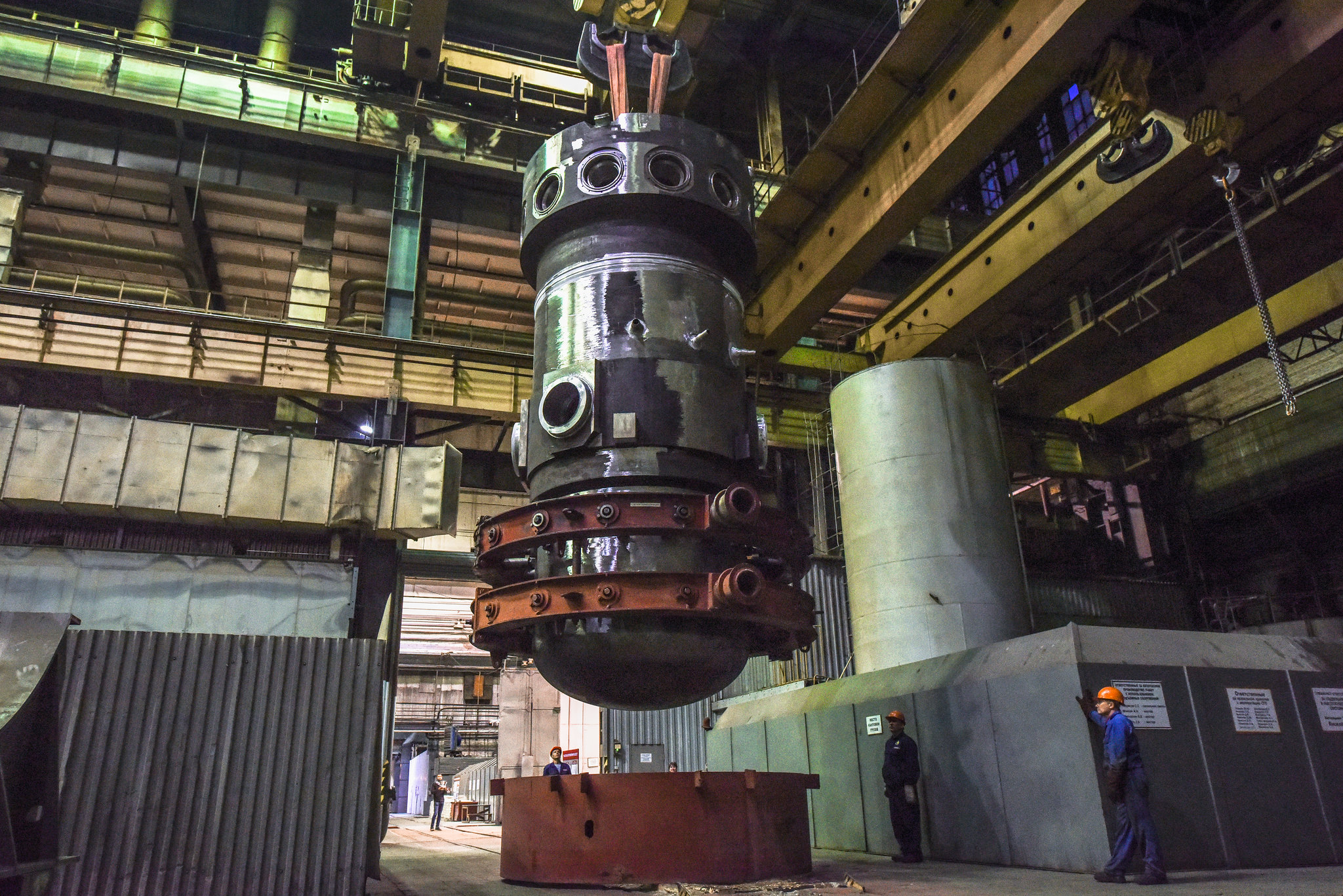
FNPP in Operation
back to contentsNuclear power in Chukotka
On May 22, the world’s only floating nuclear power plant (FNPP) Akademik Lomonosov was put into operation. “Starting today, the project to build and commission a floating nuclear power plant in Pevek, Chukotka, can be considered complete. It has become the eleventh operating nuclear power plant in Russia and northernmost in the world,” Andrei Petrov, CEO of Rosatom’s electric power division Rosenergoatom, said when signing the commissioning order.
The plant fed first electricity to the local power grid on December 19, 2019. POWER Magazine, a US media outlet for the energy industry, named the commissioning among six key events in the global nuclear generation industry in 2019. As of June 8, the FNPP produced 51.89 million kWh of electricity.
Akademik Lomonosov operates in Chukotka, one of the northernmost regions of Russia. Chukotka is located in the northeastern part of Russia and washed by the Pacific and the Arctic oceans divided by the Bering Strait. This remote region is not connected to the Russian national power grid and therefore a reliable local source of electric power and heat is vital for the regional economy and everyday life. “As a new source of energy for the local economy, it will ensure safe supply of electric power for companies and households in the Chaunsky-Bilibino Industrial Area,” Viktor Bochkaryov, the head of the Regional Department for Industrial Policy said.
The FNPP will be the main source of hot water for Pevek. In March 2020, the local authorities signed a contract, according to which the FNPP will begin supplying heat to Pevek’s District 5 on July 1. The remaining districts will be supplied with heat from the FNPP starting in 2021. This work is being done by Rosatom’s subsidiary Elkon Mining and Metallurgical Plant.
Today, the FNPP supplies power to about 20 % of consumers in the Chaunsky-Bilibino area. The Bilibino nuclear power plant remains a major energy supplier for now, with the Chaunskaya Combined Heat and Power Plant providing power to a tiny percentage of local consumers. Power fed to the grid of the Chaunsky-Bilibino Industrial Area is distributed to the cities of Pevek and Bilibino, towns of Rutkuchi, Keperveem and Chersky, Mayskoye and Karalveem mines, and Chukotka gold-mining cooperative. According to the Chukotka authorities, Kekura and Peschanka mines will be connected to power supply later this year. When a transmission line is constructed between Bilibino and Pevek, where FNPP is moored, the Bilibino NPP will be decommissioned gradually. The new transmission line is expected to be built in 2023.
The Bilibino NPP constructed in 1974–1976 was the first small nuclear power plant in the Soviet Union. It has been supplying remote areas with electric power, which is exactly the purpose for which SMRs are designed. Along with generating power, the Bilibino NPP helped to accumulate extensive experience in nuclear operation in extreme environmental conditions.
Another Chukotka-based project that is of interest for Rosatom is a small generating station at the Baimsky mining plant, which will process ore from the Peschanka porphyry copper deposit. It will need 250 MW of electric power. Rosatom has proposed to build a 342 MW nuclear power plant with three RITM‑200 reactors. In Chukotka conditions, such a plant is estimated to cost around RUB 200 billion (USD 3 billion). Rosatom is discussing construction of the nuclear power plant for the Baimsky mining plant with Peschanka Project stakeholders.
The state nuclear corporation is also discussing the possibility of building a small nuclear power plant at two other sites, in the Chelyabinsk Region and in Yakutia. The two plants will supply power to large industrial facilities.

Rosatom is ready to build RITM‑200-based generating stations in other countries, too. Representatives of Rusatom Overseas spoke about capabilities of small nuclear power plants at the Small Modular Reactor conference held in the Czech Republic in 2019. In May, they also held a seminar to present advantages of RITM‑200 reactors for onshore small nuclear power plants, such as long service life (60 years and more), predictable power prices, compatibility with renewable sources of power, possibility of heat generation and water desalination. Advantages of small nuclear power plants are detailed below.

Onshore applications will be the next step in the development of RITM‑200 technology. Six reactors of the same design are installed on the Arktika, Sibir and Ural icebreakers.
International context
According to the IAEA, there are nearly 50 different SMR concepts and designs. “Most of them are in various developmental stages and some are claimed as being near-term deployable. There are currently four SMRs in advanced stages of construction in Argentina, China and Russia, and several existing and newcomer nuclear energy countries are conducting SMR research and development.”
Here is a brief overview of the most well-known SMR concepts.
In the USA, NuScale has come closest to bringing its idea to life. However, NuScale’s reactor, which is going through a certification process, raised questions with the Advisory Committee on Reactor Safeguards (ACRS, part of the U. S. Nuclear Regulatory Commission). According to media, activation of the emergency core cooling system and design of steam generators raise certain concerns. The agenda for the ACRS meeting in June includes issues related to the magnitude of differential boron worth and a final memo on the NuScale design certification.

The NuScale design uses helical coil steam generators (HCSG) with small size being their main advantage. This does not pertain, however, to the steam generator that the US company plans to use. The length of its pipes is 26.5 meters and, even though they are coiled, the generator is very high. Making both the reactor and the generator vertically elongated is an attempt to reduce steam generation by increasing pressure.
Despite the increased height, some steam is still formed in the primary loop. And it is not clear yet whether steam bubbles collapse or merge. If they merge, the growing steam volume increases the flow rate of coolant and fluctuations in its temperature and density (cold/hot alternations) at the entrance into the core, leading to reactivity disturbance.
What is worse, the impact of certain factors on the process of steam generation has not been studied thoroughly yet. Such factors include delayed heat transfer from fuel elements to the coolant, heat conductivity and temperature (accumulated energy) of fuel elements, and effects of these factors (weakening or strengthening) when acting in combination. As a result, fluctuations in steam generation — temperature — density — reactivity at power changes are not regular either. The pressurizer cannot compensate for these fluctuations in due time. The reactor core is not self-controlled either, so it is not quite clear yet what and how will be used to respond to reactivity disturbances, which need to be responded in a fraction of a second, in fact, instantaneously.
This April, the US Department of Energy announced plans to create a new generation of nuclear reactors. The DOE tendered out a contract to support the development of a new-generation reactor and allocated USD 5.4 million to prepare a site for the demonstration reactor in Portsmouth, Ohio.
In Argentina, construction of the 25 MW CAREM small modular reactor beside the operating Atucha I Nuclear Power Plant was suspended last year. The suspension was due to violations by a subcontractor, according to Argentina’s energy secretary Sergio Lanziani. In its turn, the subcontractor said that the suspension was caused by the government’s failure to pay for the work on time, changes in the design, and a failure to timely submit technical documents. In April, it was announced that the construction would be resumed.
China decided to develop its own design of a floating nuclear power plant. A framework agreement was signed in China this January to make preparations for the construction of a demonstration reactor. The signatories to the agreement are CIMC Marine Engineering Research Institute and Taihai Clean Energy (Shandong) Company (part of CNNC).

Our overview shows that the operating Akademik Lomonosov is yet the only example of a small nuclear power plant commissioned in recent years. Development of other designs is underway in many countries, but they are still far from deployment.
What is Akademik Lomonosov
The floating nuclear power plant Akademik Lomonosov has two KLT‑40S reactors with a capacity of 35 MWe each. The total capacity of the FNPP is up to 77 MW of electricity and 146 Gcal/h (300 MW) of heat. With a displacement of 21,500 metric tons, Akademik Lomonosov is 140 meters long and 30 meters wide. Its design life is 40 years; the repair interval is 12 years.
Why SMR?
Credits: A. I. Leipunsky Institute of Physics and Power Engineering, a subsidiary of Rosatom
- SMRs can replace outdated power plants running on fossil fuel
- Ideal as a source of heat and power in remote territories
- Less money and time needed to construct; more attractive to investors
- Compatible with non-nuclear sources of power
- Fully factory-assembled; modules can be added to one another
- Easier maintenance; fewer maintenance staff required
- Reactor modules can be removed or decommissioned on-site after their service life expires
There are currently four basic designs:
- Light-water reactors
- Fast-neutron reactors
- Graphite-moderated reactors
- Molten salt reactors
Light-water reactors have the lowest technology risk. Fast-neutron reactors can be made smaller and simpler and have a longer refueling interval. Molten salt reactors also have certain advantages.
PHOTO: FNPP Akademik Lomonosov
CAREM site
The RITM-200 reactor




